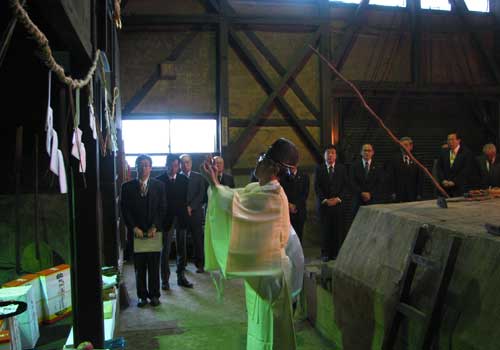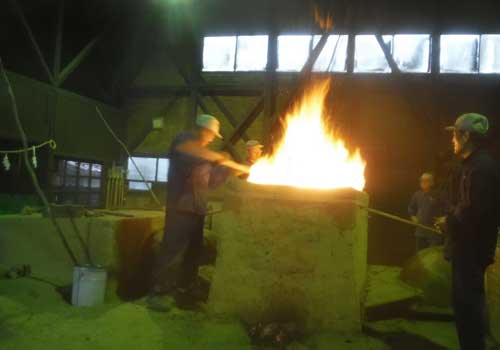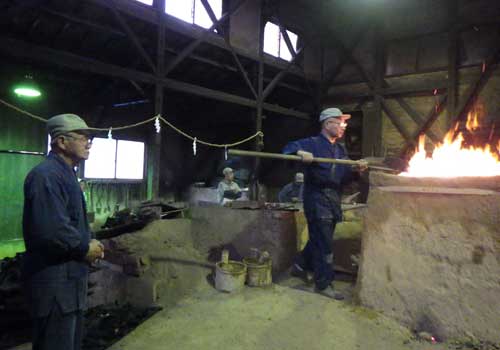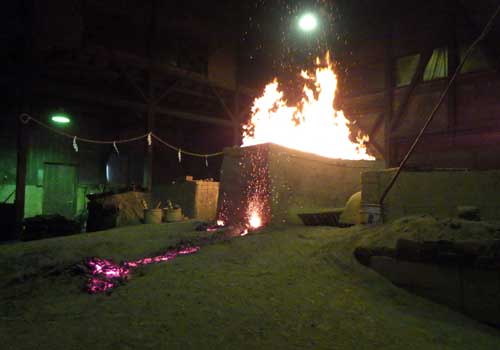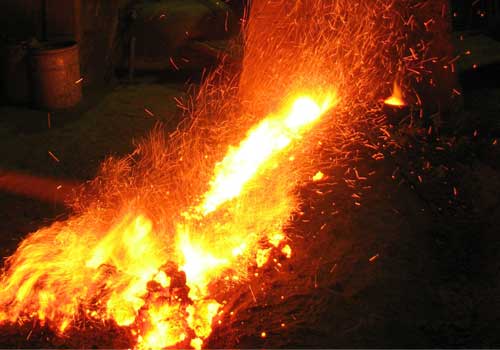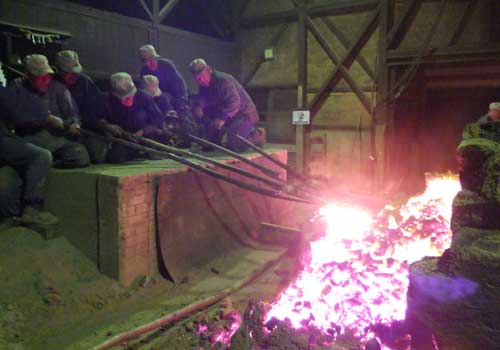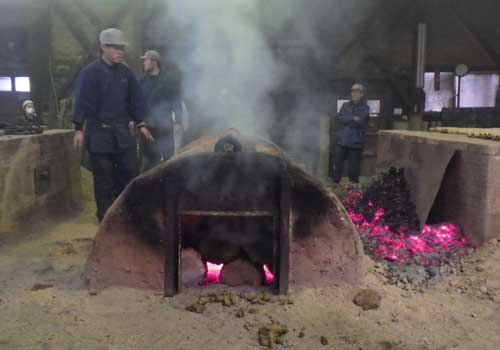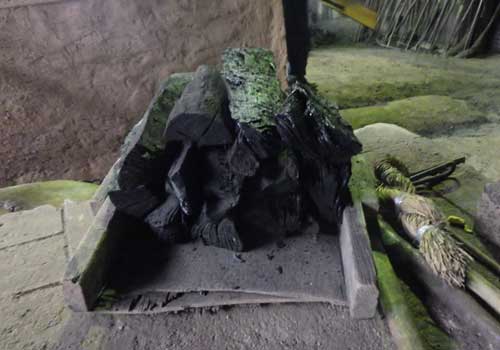
Producing the Steel for Japanese Swords
Using traditional techniques to produce tamahagane,
the steel used for Japanese swords, the acme of steel craftsmanship
The Society for the Preservation
of Japanese Art Swords
Designated in 1997
The Japanese Sword Museum, 1-12-9 Yokoami, Sumida-ku, Tokyo 130-0015
This society is involved in the making of tamahagane, the type of steel that is indispensable for Japanese swords, relying on techniques that date from the Edo period (1603-1868). The process takes three days (a total of about 70 hours) from the time the clay-tub furnance (tatara) is lit. The purity of the resulting tamahagane makes it ideal for blades. The steel is produced several times a year at the Nittōho Tatara in the town of Izumo, Shimane Prefecture.
